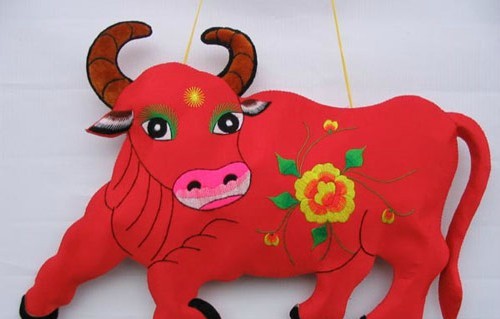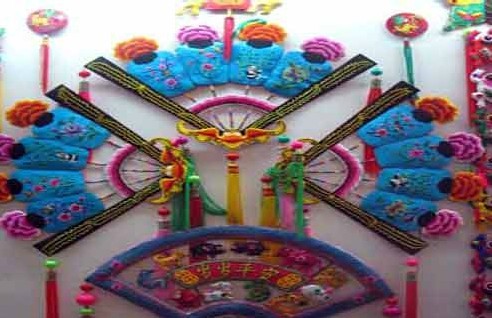Arts and traditions
Qingyang Scented Sachet Embroidering (ICH)
Updated: 2013-10-30( chinaculture.org )
The first list of Intangible Cultural Heritages was approved by the nation in 2006.
Year: 2006
Sort: Traditional Fine Arts
Area: Guansu province
Serial No.: VII-26
Declarer: Qingyang,Gansu province
People wear scented sachets, Xiangbao in Chinese, on the Dragon Boat Festivalthat falls on the fifth day of the fifth lunar month, to ward off evil spirits. Residents in Qingyang in eastern Gansu province are no exception.
This tradition in Qingyang is rumored to have emerged over 2,300 years ago, when Qibo, the author of the Yellow Emperor's Inner Classic, the most seminal medical text of ancient China, used to wear a sachet filled with herbal medicine to prevent diseases. Qibo was a native in Qingyang, and this tradition spread widely in this area thereafter. Because the herbal medicine was also called "scented medicine", the sachet containing it was thus named the "scented sachet." It was in the Ming (1368-1644) and Qing (1644-1911) dynasties that the tradition of wearing or sending scented sachets as presents saw an increasing popularity in Qingyang. Making and embroidering the scented sachet was so popular in Qingyang that girls began to learn needlework at seven or eight years old. In 2002, Qingyang was credited as the "home of scented sachet embroidery."
There're a variety of ways to embroider when making a scented sachet in Qingyang, including hidden stitch embroidery, twisting embroidery, three-dimensional embroidery, and plane embroidery. Stitches are hidden to make the scented sachet look more appealing in the hidden stitch embroidery. Colorful threads are twisted into Zongzi-shaped patterns, symbolizing wish for good luck. Zongzi, bamboo-leaf-wrapped packets of glutinous rice, is a traditional food during theDragonBoast Festival. It's usually four-sided with pointed, or rounded ends, or pyramid shapes. Hanging ornaments are usually completed with three-dimensional embroidery. Plane embroidery is also commonly used to make a scented sachet.
Scented sachet embroidery in Qingyang is in danger of dying out because more mechanic reproduction has appeared and less people prefer to embroider any more. Immediate measures need to be taken to save this traditional handicraft.
 |
| Qingyang Scented Sachet Embroidering |
 |
| Qingyang Scented Sachet Embroidering |


